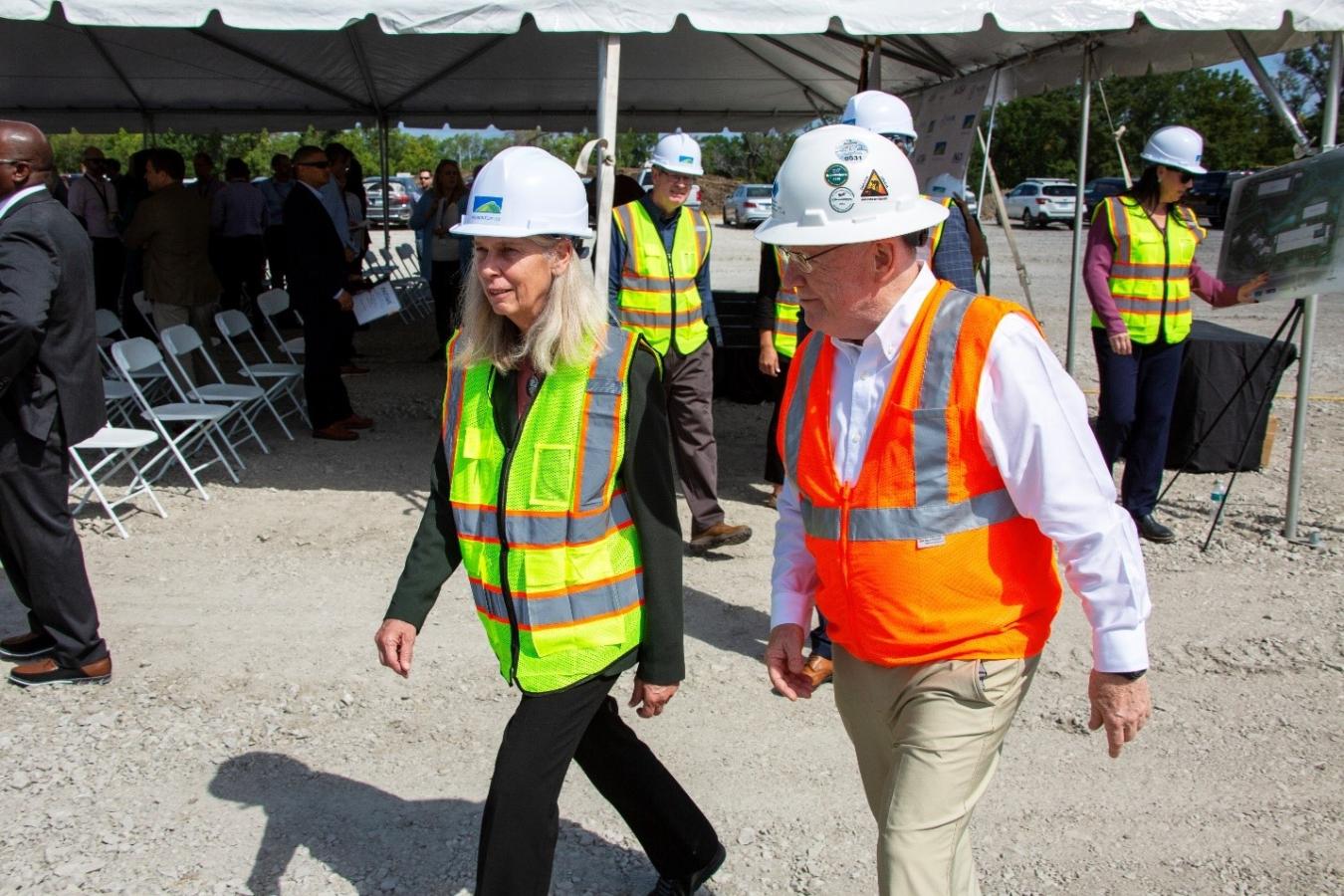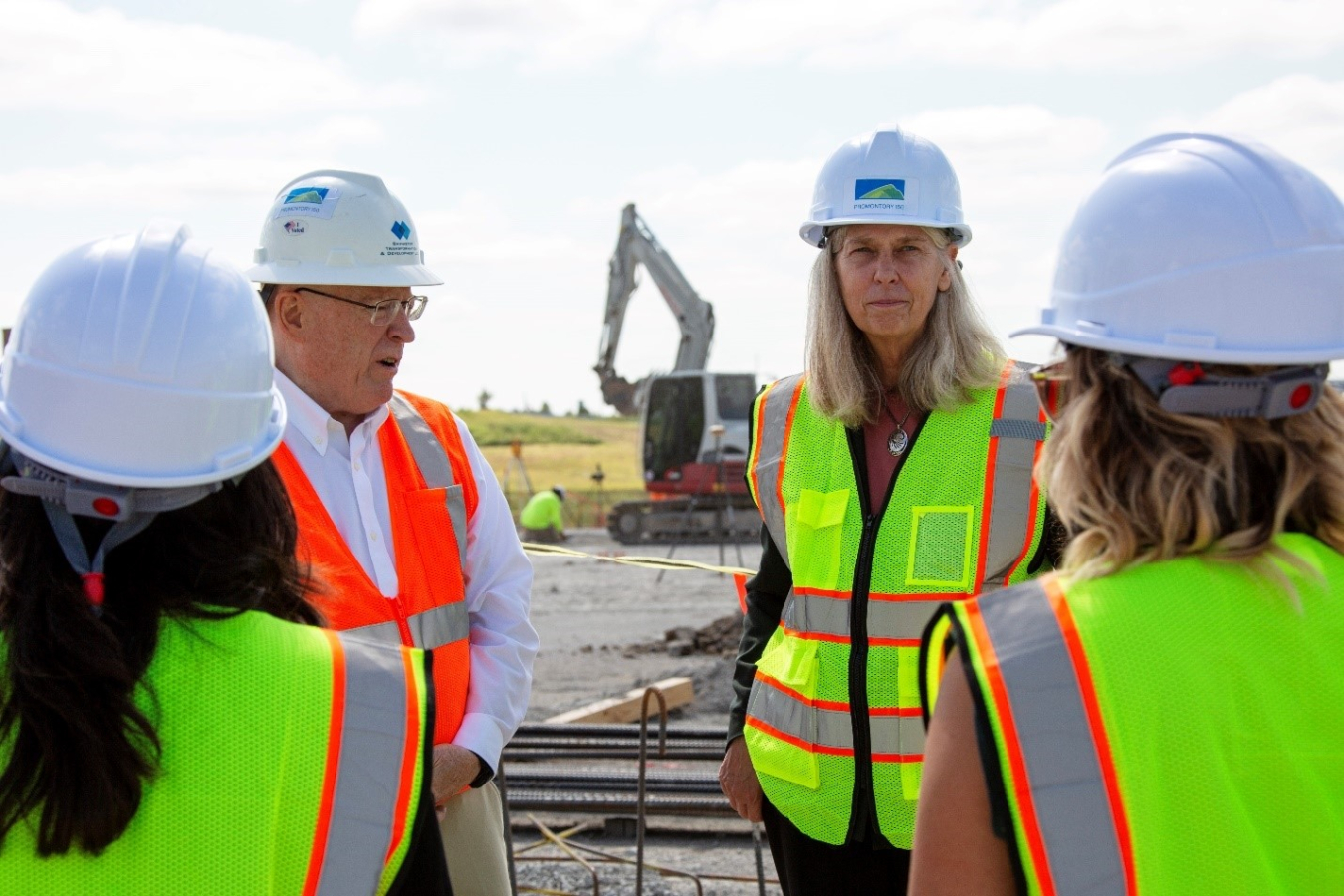NNSA Administrator Jill Hruby delivers remarks at the Kansas City Non-Nuclear Expansion Transformation Commencement Ceremony (KC NExT) at the Kansas City National Security Campus (KCNSC), August 7, 2024
National Nuclear Security Administration
August 7, 2024Good morning, everyone, it’s great to be back at KCNSC and to see all of you. Thank you to everyone from the Kansas City Field Office, Promontory 150, our partners at Honeywell, and NNSA’s Offices of Infrastructure and Defense Programs for their hard work in getting this project to this point and in organizing today’s ceremony.
As we’ve said repeatedly over the last few years, our infrastructure needs to be more capable, flexible, and resilient to meet our mission requirements for the next couple decades and beyond. By necessity, our infrastructure recapitalization is occurring in parallel with delivering modernized warheads to the Department of Defense. We knew doing it this way would be hard. We knew it would carry risk. But real progress is being made. And here, today, we get to celebrate another milestone on the road to creating the enterprise capability we need for the future.
I’d like to take a moment to put things into perspective. The current campus was sized for one weapon modernization program in production and one modernization program in development. But the work we need to do has far outstripped that expectation. Today, we have two weapons in production, two additional weapons preparing for production, and another three in design.
Last year alone, NNSA delivered over 200 modernized warheads on time to the Department of Defense, the most since the end of the Cold War. Non-nuclear components make up the overwhelming majority of each of those warheads. That’s why KCNSC delivered components containing more than 300,000 parts in the past year. And we expect that rate of production and delivery to continue to be demanding over the next decade.
I want to be clear that the program of record is daunting. For a number of years, we have been implementing five simultaneous modernization programs. The W88 Alt 370 Program and B61-12 Life Extension Program are currently in full rate production. This represents consistent progress since our announcement of the First Production Units in Fiscal Years 2021 and 2022 respectively. The W80-4 warhead remains aligned with the Air Force schedule for the long-range standoff weapon and on track for a First Production Unit in September 2027. The W87-1 is scheduled to begin production in Fiscal Year 2031 or 2032. Lastly, the W93, a new warhead program based on existing designs, remains on track for production starting in the mid-2030s. This system is being designed and produced in parallel to the UK replacement warhead. These five programs, combined with the delivery system modernization by the Department of Defense, represent our effort to sustain the nuclear triad.
We knew doing it this way would be hard. We knew it would carry risk. But real progress is being made. And here, today, we get to celebrate another milestone on the road to creating the enterprise capability we need for the future.

However, this past year, we have added two additional weapons into the existing program of record. These new systems directly respond to emerging deterrence needs and expand nuclear options available to the President.
The B61-13, announced last October, will add a capability for certain hardened and large-area military targets. These systems will be produced by modifying some B61-12s at the end of production and will provide an option similar to the B61-7 but with the improved safety, security, and accuracy of the B61-12. The number of B61-12s built will be decreased by the number of B61-13s manufactured, resulting in no change to the number of weapons in the stockpile. We anticipate a First Production Unit of the B61-13 in Fiscal Year 2026.
Additionally, the Sea-Launched Cruise Missile – Nuclear, or SLCM-N, was authorized in the Fiscal Year 2024 National Defense Authorization Act and funded in the Fiscal Year 2024 budget. SLCM-N will provide a low-yield, non-ballistic capability to the Navy. The NDAA requires an initial operating capability by the end of Fiscal Year 2034. NNSA is standing up a program office and coordinating with the Department of Defense on the details of this new program. Because of the timeframe directed along with the other systems in development and production, NNSA is looking for options that satisfy the deterrence need and interface appropriately with Navy delivery systems, while putting the least amount of stress on our busy enterprise.
With these two announced changes, we now have seven systems in the program of record to be delivered by the mid-2030s. This program represents not only an overhaul of all three legs of the nuclear triad, but also adds new deterrence capabilities that don’t currently exist. The program is responsive to today’s global environment both in timeframe and capability.
While this is a lot of work ahead, I am confident we will be successful. And we must be successful. And that success does not happen without more capacity and capability at KCNSC.

So, I’m pleased to be here today for the commencement ceremony for the multi-phase Kansas City Non-Nuclear Expansion Transformation, or KC NExT. This 245-acre expansion is critical to increase NNSA’s capacity to produce non-nuclear components, accommodate employees currently located at other facilities, and provide for future growth in the workforce.
Over the coming years, KC NExT will be built in 15 phases that will ultimately add 675,000 square feet of office space and around 1.1 million square feet of manufacturing space and supporting buildings. This first phase is a roughly $200 million investment in a 700-person office building with supporting parking and infrastructure, and we expect to take possession in mid-2026.
I’d like to briefly touch on how this expansion came about because it reflects NNSA’s key themes: innovate, collaborate, deliver. The first-of-its-kind innovative purchase agreement, “build-to-suit” facilities, and the phased-in development of the expansion, collaboratively with Promontory 150, local community stakeholders, and across our field office and programs speak to a willingness to embrace adaptability over risk aversion to deliver mission. It also aligns with NNSA’s objective to deliver infrastructure on time and within budget with disciplined project management and without undue contingencies. Importantly, the expansion also aligns with our firm commitment to be good neighbors and responsible environmental stewards. All new buildings will be LEED Gold certified and meet federal green building standards.
Over the coming years, KC NExT will be built in 15 phases that will ultimately add 675,000 square feet of office space and around 1.1 million square feet of manufacturing space and supporting buildings.
I want to emphasize that KC NExT represents the strengthening and commitment to our long-term mission in Missouri. This full expansion over the 15 phases is planned to last into the 2040s. Fundamentally, this approach allows us to speed up or slow down as the demand requires.
To wrap up, I want to again thank everyone for their effort in making this project possible. I can’t wait for KC NExT to take shape over the coming years.

